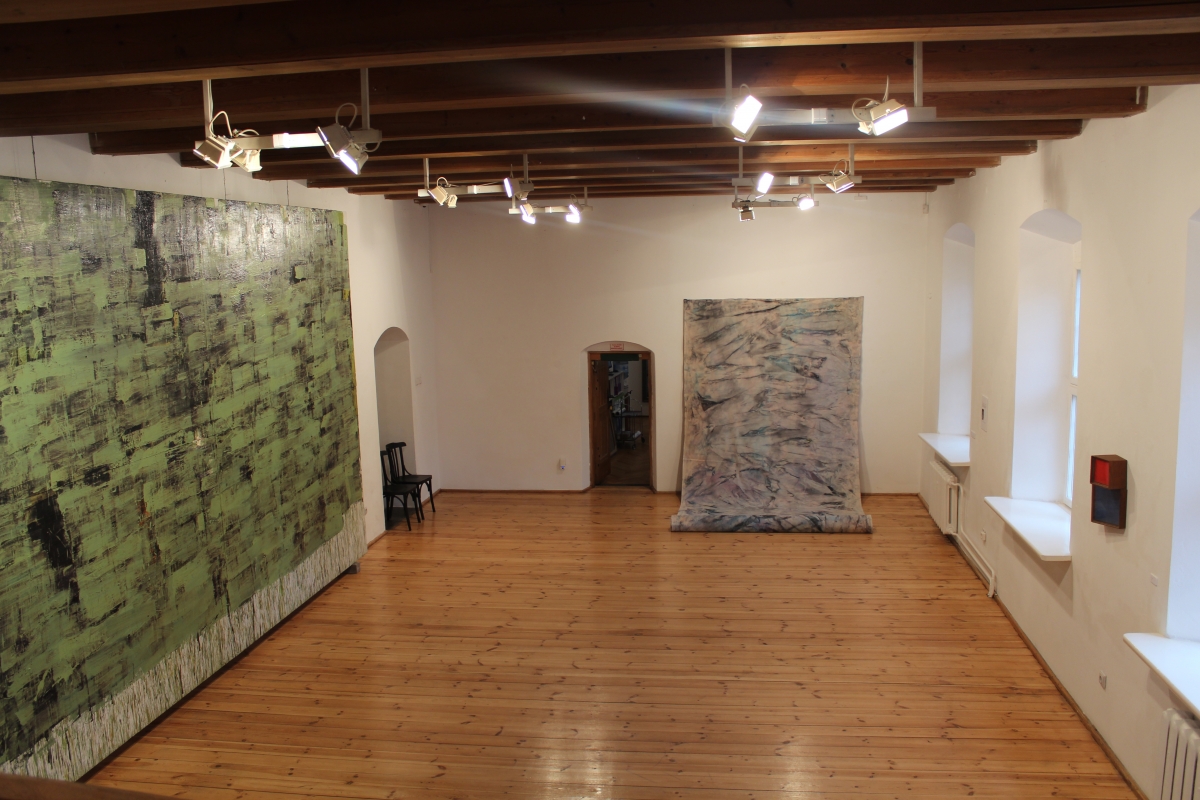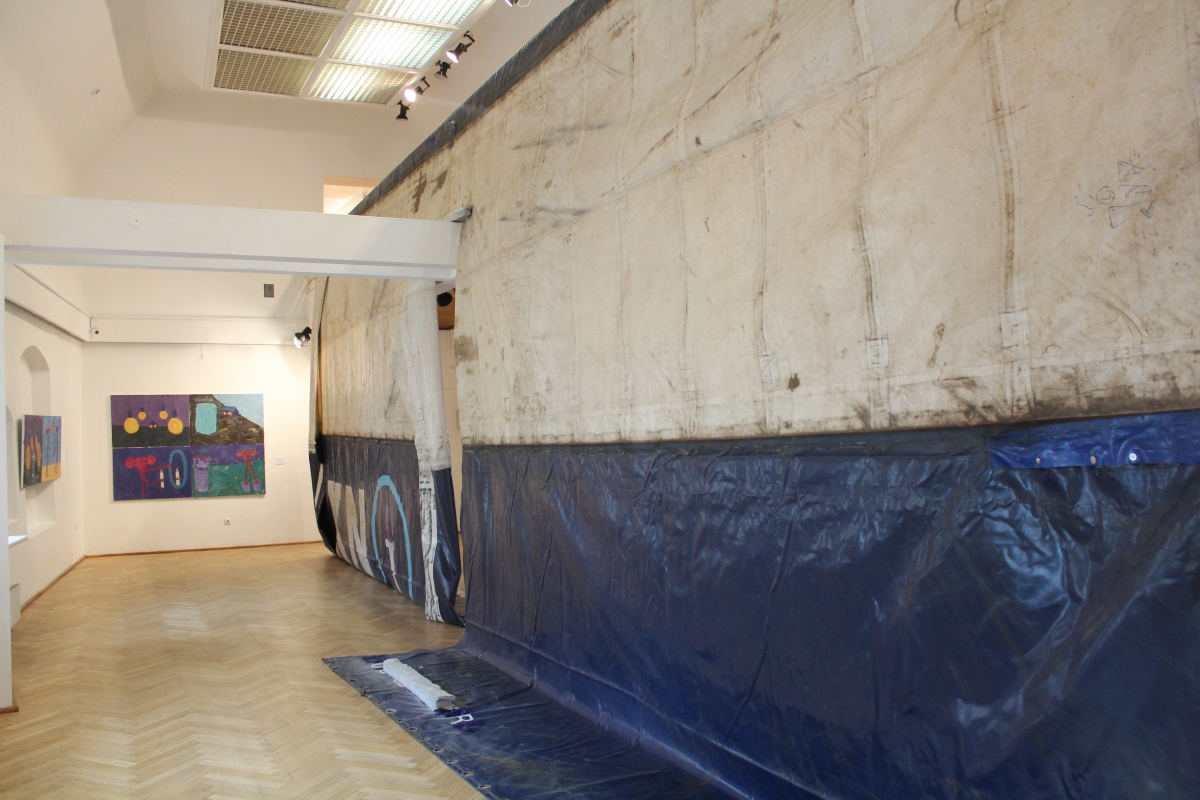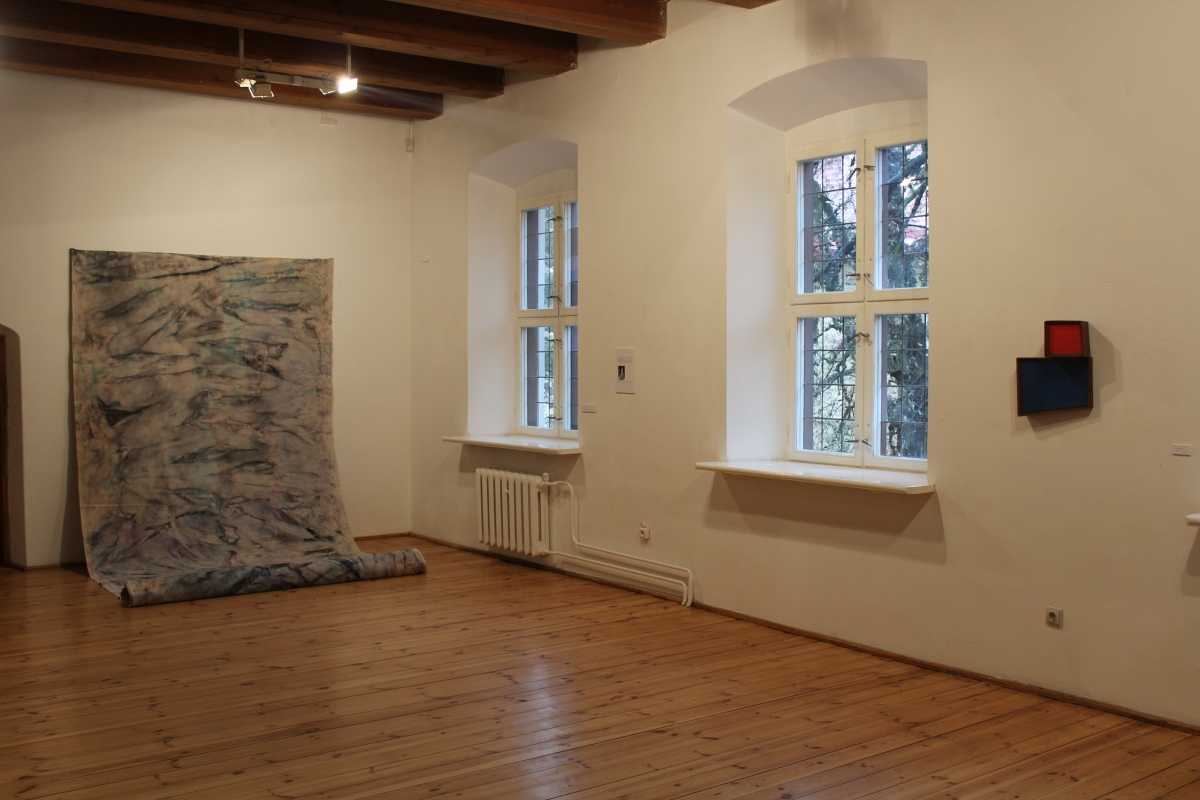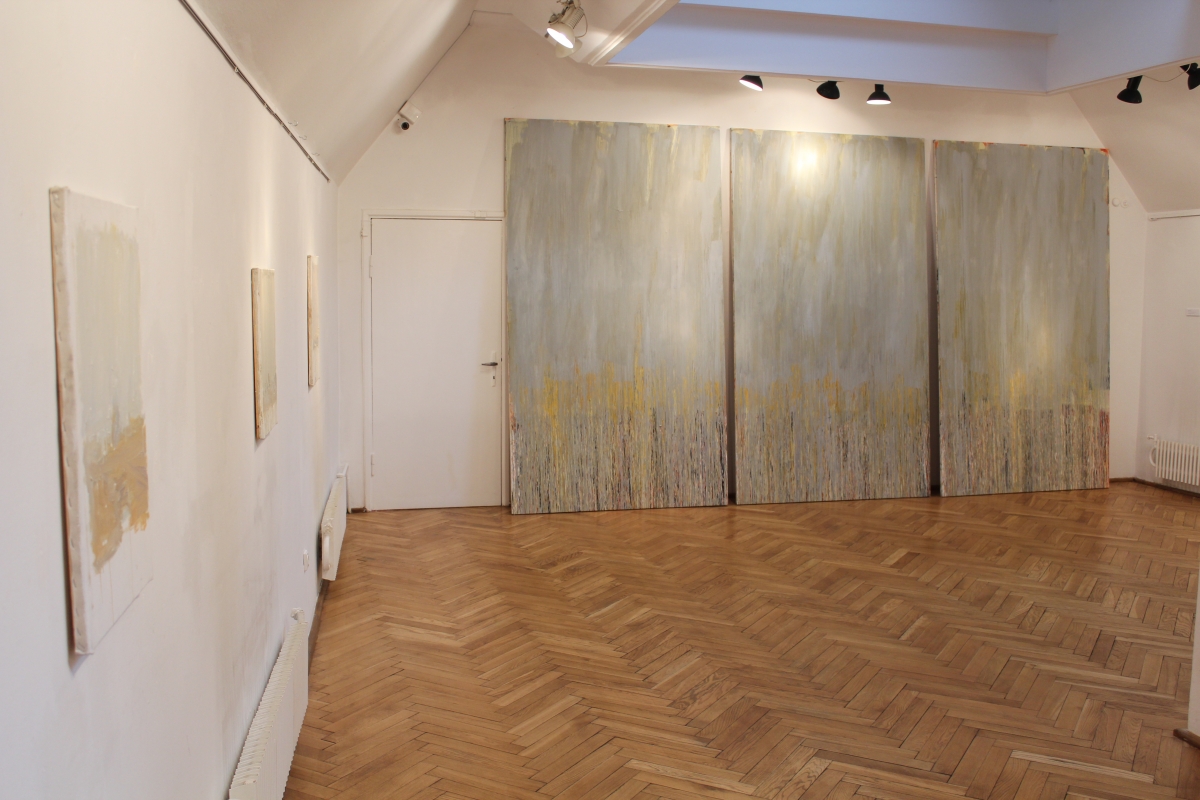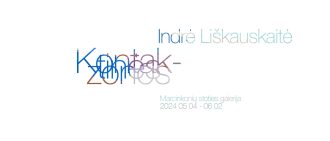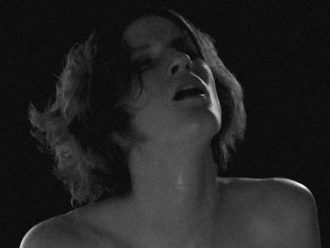
It seems romanticism “ended” many times, especially for the ironical postmodernists, who do not believe in the historical passage of time. The revivals of romanticism are also always transformed or intertwined with opposite forms. Although the modern “meta-artist” masterfully managing technology and nostalgic imagination, combines, shakes and invents ever new surfaces of reality. Is he a meta – post – hyper romantic?…Or maybe romanticism never fully came true? However, these reflections about the term and concept of romanticism were not the only reason spurring the organization of this show.
This time the ambitions to show romanticism in the form of plastic language. The show presents specific kinds of abstract painting, as if balancing near the margins, radical solutions of contemporary sculpture, artistic experiments with natural materials. Thus the question of the meaning of representation is the spur of such attempts: is it still possible to view artistic creativity as the collision with reality and to recognize the tension made by it? Or is it only the processes of mass production that have become the most significant?
The problem of the continuation of romanticism is touched on in all its complexity. Of course, it can’t be “solved” simply by displaying a number of artists, as if comparing examples illustrating theoretical debates. The more so that participants in the show have not undertaken to formulate a special “answer” to the question suggested by the title of the exhibition. The idea is revealed through the artists’ positions and ways of thinking, expressed in their artworks and deeply integrated in them: a romantic revolt, but only verging on destruction; escapism, but paradoxically desiring to reach reality and to realize the transforming action. Are these artists romantics? Similarly, the contemporaries of historical romantics would have asked the same question. If they did not use direct rebellion and shocking actions or did not even display the typical symbols of romanticism –does that mean that they were also not “romantic” enough?…
Participants taking part in this show are presented as creating and imagining artists-romantics, standing in opposition to the “meta-artist” who manipulates the intrinsically narrow apathy disseminated by technological images[1]. One can say that these forms of romanticism are based on reality, not on some “handbook”. These artists can be found existing resignedly beyond mass production and stereotypes. That’s why it is impossible to define romanticism in one medium or form, or to put it into a strict framework. The tension between an image and its display, as well as between an idea and action, is visible in each artwork and in the whole exhibition: the huge and ironic object of industrial romanticism by Lithuanian sculptor Mindaugas Navakas; the energetic canvases by Lithuanian painter Henrikas Čerapas; the search for “absolute painting” in Polish painter Krzysztof Klimek’s abstractions; canvas affected by natural accidents, by the Icelandic artist Guðrún Benónýsdóttir; Nordic landscape visions in paintings and installations by the Norwegian painter Torild Rødland; the documentation of performance and drawings by Polish conceptual artist Zbigniew Warpechowski; the reconstructions of “ready-mades“ by Polish artist Piotr Lutyński; and the figurative expression and poetical visions by Lithuanian painters of the younger generation, Alonas Štelmanas and Edgaras Andriūnas (1987-2010).
It’s quite understandable when specialists in other fields criticize romanticism as a dangerous force for the estheticization of reality. Is it also suppressed by the artists themselves, who no longer believe in the potential of humanism hidden in its ideas? While searching for the new manifestations of romanticism in contemporary art one wishes to express an expectation, rather than to confirm definitively settled phenomena.
[1] This leitmotif of the show was inspired by the book of Jerzy Hanusek “Robak w sztuce”, Kraków: Stowarzyszenie Artystyczne “Otwarta Pracownia”, 2001.
Curator of the exhibition dr. Agnė Kulbytė
LAA Gallery “Arka“ (Aušros Vartų str. 7, Vilnius)
